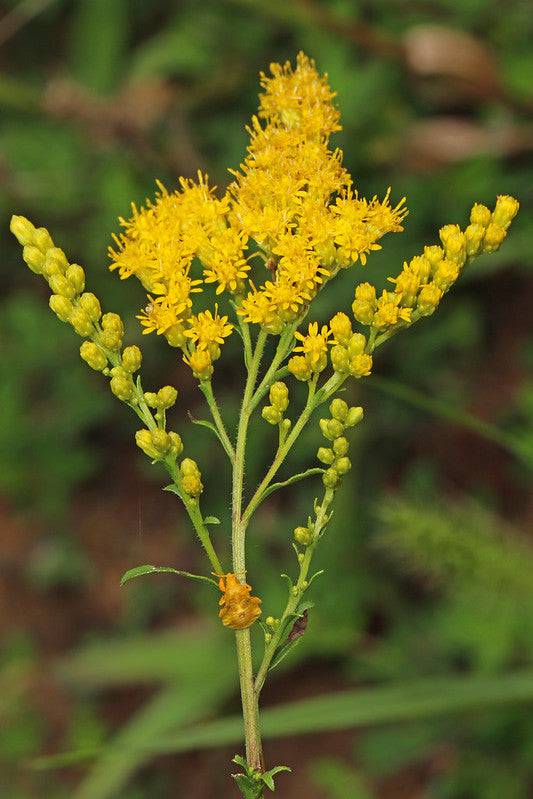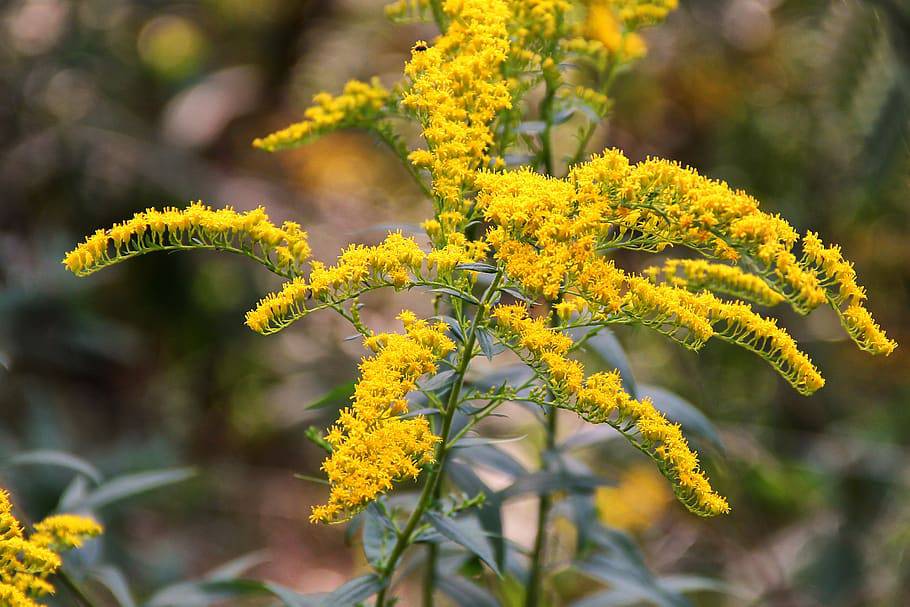Gray Goldenrod
- Shipping Available
- In stock, ready to ship
- Backordered, shipping soon
Also known as Gray Goldenrod, Prairie Goldenrod, Oldfield Goldenrod, Grayleaf Goldenrod, Gray-leaved Goldenrod, Dyersweed Goldenrod, Dwarf Goldenrod, Field Goldenrod
Solidago nemoralis, affectionately known as old field goldenrod, is a charming sunflower family member, gracefully growing upright with its rhizomatous form. Typically, it reaches a compact height of just 0.5' to 1', and on rare occasions, it may stretch up to 3' tall. As one of the smaller goldenrod species, it proudly calls North America home, flourishing across the southern provinces of Canada, from Newfoundland all the way to British Columbia, and in the United States, from Maine to Florida, extending westward to Montana and New Mexico.
This beautiful perennial often shows off a charming clump of 1-6 unbranched gray-green stems, lightly dressed in soft, short white hairs. From August to November, it treats us to a stunning display of vibrant flowers, as narrow, gently arching plumes adorned with bright yellow blooms (panicles) grace the stems, measuring 4-10" long. Each flowerhead, about 1/4" across, adds a delightful touch to the upper side of each panicle, and once they bloom, they transition into hairy achenes, further enhancing the plant's unique character.
Goldenrods are attractive to bees and butterflies.
Height: 1'-2'
Spread: 1'-2'
Bloom: August-November
Light: Full Sun
Water: Low, Medium
Zone: 3, 4, 5, 6, 7, 8, 9
Origin: Texas, North America
Spring Shipping:
Orders are shipped within 7-10 business days. We will email you if there are expected delays.
When you order plants from our nursery, you can expect them to arrive in the best possible condition. Our team carefully packs each order using sturdy, biodegradable packaging materials.
Your plants' appearance may vary depending on the season and their current growth stage. We may cut back the leafy growth of some plants to prepare them for shipment and transplanting.
5 Gallon and Up: Any plant purchased to ship over 5 Gallons will be shipped bare root. This means we will remove the plant from its original pot, remove the soil surrounding the roots, and wrap the roots with a biodegradable plastic bag. This reduces weight and the likelihood of damage during shipping.
Once your plants arrive, it is essential to plant them as soon as possible. This will help them rebound and thrive. If you cannot plant immediately, water regularly and keep the roots off heat-conducting surfaces.
Newly transplanted plants often require more water until their roots are well established. Plan to water them 1-3 times weekly for the first few months.














